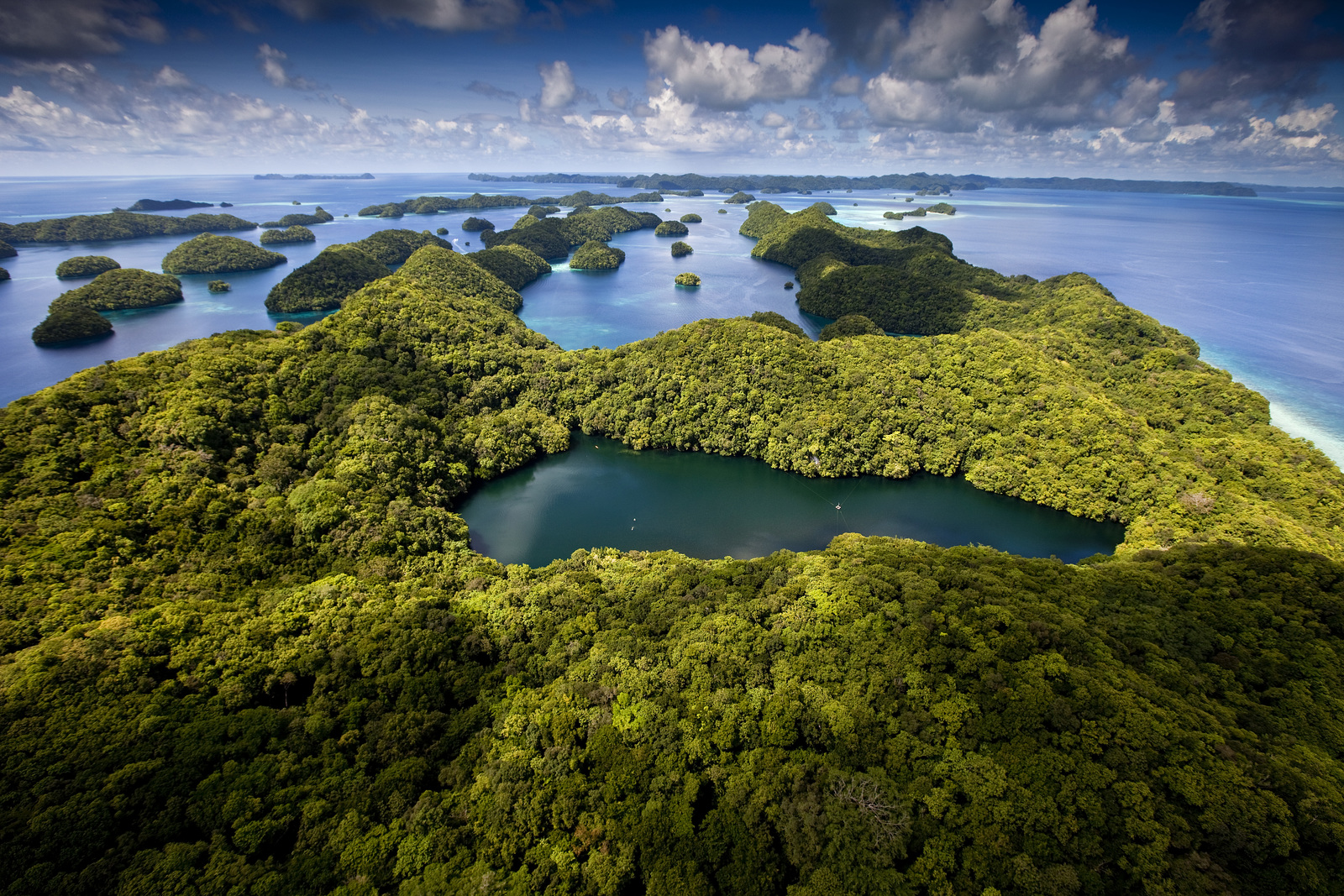Connecting Communities in Hawaiʻi
The Nature Conservancy’s Hawaiʻi marine program was launched in 2001, a decade after the organization’s efforts in the Pacific. Applying what was learned through those experiences, the program embarked on local conservation partnerships with communities at a handful of sites on the islands of Maui and Hawaiʻi. The robust partnerships became the foundation for peer networks that are now accelerating learning and action across Maui Nui (which incudes the islands of Maui, Molokai, Lānaʻi, and Kahoʻolawe) and West Hawaiʻi Island.
Addressing Local Priorities
In its first decade, The Nature Conservancy’s Hawaiʻi marine program supported individual community groups working to restore abundance to coral reefs, nearshore fisheries, intertidal systems, and fishponds. The groups were working to revive and apply native Hawaiian cultural practices to restore health to these systems. Conservancy teams provided additional tools, guidance, data, and expertise to help them develop science-based conservation plans and management strategies that are also culturally appropriate.
Building Broader Community Support
To build support and skills across the broader community—which is vital to the success of these efforts— Conservancy staff also worked with partners to design a variety of monitoring programs, and trained community volunteers to monitor water quality, coral bleaching, and fish and ʻopihi abundance so that management actions can be developed, assessed, and adapted based on both local observation and scientific assessment.
Connecting Local Leaders
Though some of the groups had been working to improve management of marine resources for decades, they were all working in isolation. To strengthen their efforts, the Conservancy introduced local leaders in these areas to leaders from Fiji’s Locally Managed Marine Areas (LMMA) network. The LMMA leaders, whose network has grown to include 450+ sites, provided an example of how the network approach can accelerate community-based management through peer learning and increase the influence of its members through their collective voice.
“Hearing these stories was a turning point. The Hawaiʻi communities embraced the network model as a way to lead and influence management in the places they were working to protect.”
Evolving from Sites to Scale
As a result, community groups working to restore and protect six sites across the three populated islands of Maui Nui formed the Maui Nui Makai Network to accelerate their progress, amplify their voices, and inspire other communities to action. The network established decision-making and governance processes at the onset to ensure focus and provide a clear mechanism for the network to grow.
Since its establishment, all six network members have completed conservation plans and robust monitoring programs, two have established a voluntary no-take area for the culturally-important intertidal limpet known localy as ʻopihi, and several are seeking revised State Administrative Rules to improve management. Together, the network has engaged more than 5,000 community volunteers and citizen scientists in restoration and monitoring efforts, and has developed a Community-Managed Makai Area How-to-Guide as a resource for other community groups undertaking similar efforts. The guide outlines the process to effectively engage in collaborative management with the State and other partners, and will be available on the network’s website, currently under development.
“It’s a shift from relying on the state to take care of our marine resources, to communities taking the lead and providing solutions.”
The Maui Nui Makai Network inspired the launch of two other peer learning networks on the west coast of Hawaiʻi Island. The Kai Kuleana Network links 11 communities working to restore abundance to coral reefs, nearshore fisheries, and intertidal systems; and the Hui Loko Network links 10 communities working to restore and protect traditional fishponds and anchialine pools. Network members actively support each other’s efforts through joint work days and sharing equipment, supplies, and staff, quickly learning together what works and what doesn’t. All three networks are committed to perpetuating Hawaiian culture, traditions, and values, beginning with the responsibility and privilege of caring for a place, and serve as a source of inspiration and encouragement for each other.
The Conservancy, U.S. National Park Service, Hawaiʻi’s Division of Aquatic Resources, Maui Nui Marine Resources Council, Kuaʻāina Ulu ‘Auamo (KUA) and other partners advise and support these networks. KUA also convenes E Alu Pū, a statewide group of community leaders that promotes community-based conservation.
The Kai Kuleana, Hui Loko, and Maui Nui Makai Networks are members of E Alu Pū, strengthening the collective voice for community-based conservation across the state.
“In Hawai‘i, community-based conservation is led by the communities themselves. Our role is to support them, to provide tools and help them build a context to do their work better. One of those tools is the E Alu Pū Network - a place where communities can learn from, empower and support each other. ”
To download a pdf of this section, click here.





